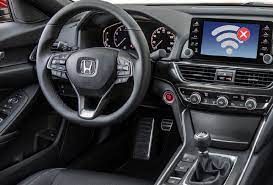Reading that, probably on a 5G-enabled device, you think, “Huh. Quaint.” But even if your smartphone’s network is several generations ahead, the same might not be true for your car. The truth is a large number of new cars made in the last decade, even some in the 2021 model year, were built with their connected services running on 3G. That includes things like in-nav traffic and location data, WiFi hotspots, emergency call services, remote lock/unlock functions, smartphone app connectivity, voice assistants, and even concierge services. With few exceptions, most of those features in most of those cars will no longer work by the end of 2022 when AT&T, Verizon and T-Mobile all pull the plug.
The end of 3G is perhaps the most under-covered story in the industry right now with the widest potential impact, involving millions of cars from nearly every major automaker. At the same time, the response from car companies has been uneven at best—as we’ll explain here, automakers’ plans range from upgrading people’s vehicles to 4G or 5G (for a fee, of course) to shrugging their shoulders and quietly acknowledging that their cars are about to lose a lot of features.
In many ways, it’s also a preview of the kind of longevity issues we’ll face in a future of fully connected vehicles, loaded with subscription features whose continued functionality depends on your car being able to talk to a central server controlled by a company and reliant on a network technology that won’t be around forever. The decision to make cars part of the internet of things has undeniable upsides, but innumerable consequences that we’re only just starting to grasp. Change is coming, and it’s not always going to be pretty.
Now, we already outlined a number of the connected vehicle services that automakers built on 3G networks over the last ten-plus years: everything from owner apps to emergency call services to in-nav functionalities to reporting telematics data back to the mothership. It’s common knowledge that automotive tech lags normal consumer standards—your smartphone is good, but most infotainment systems are bad—but it’s still kind of a shock to behold the whole list of affected cars that rely on 3G, which includes a lot of luxury cars from 2017-2019 and even some 2021 models.
Because 3G towers are being shut down, this means either shutting down these services, or switching over cars to run on newer cellular communication standards like 4G. For some cars, this means an over-the-air-update or a hardware swap at a dealership. For others, it’s the end of the road for connected services. A few automakers have compiled public FAQs, listing affected models and services and their plans for managing the switch. Others have been not been responsive or open. After weeks of reaching out to every major automaker, The Drive compiled a list of every car that’s going to be impacted by the sunsetting of the AT&T, T-Mobile and Verizon 3G networks in 2022, with links to the official OEM pages listing which services will be discontinued or altered:
Source : https://www.popsci.com/cars/cars-3g-shutdown/







